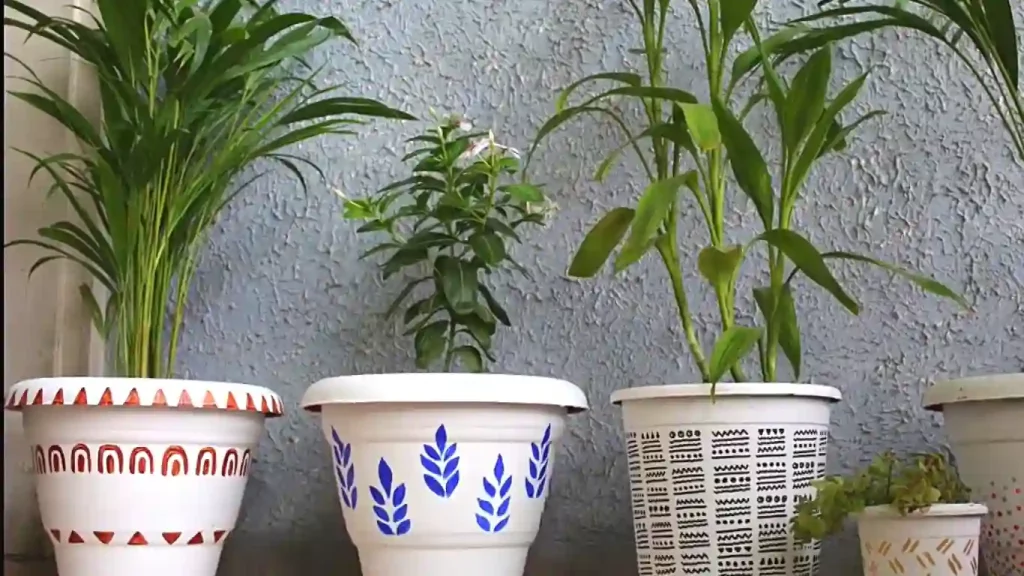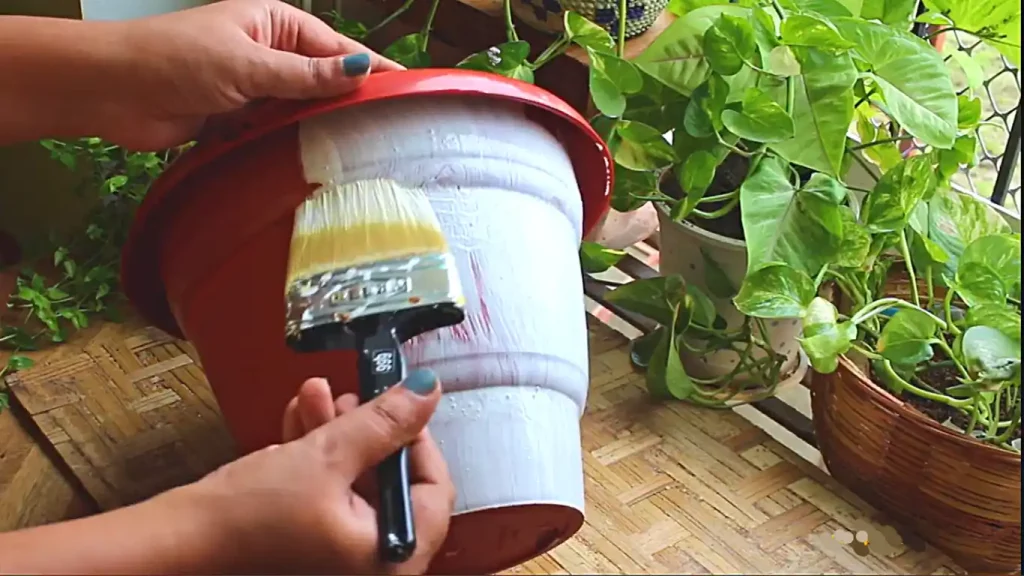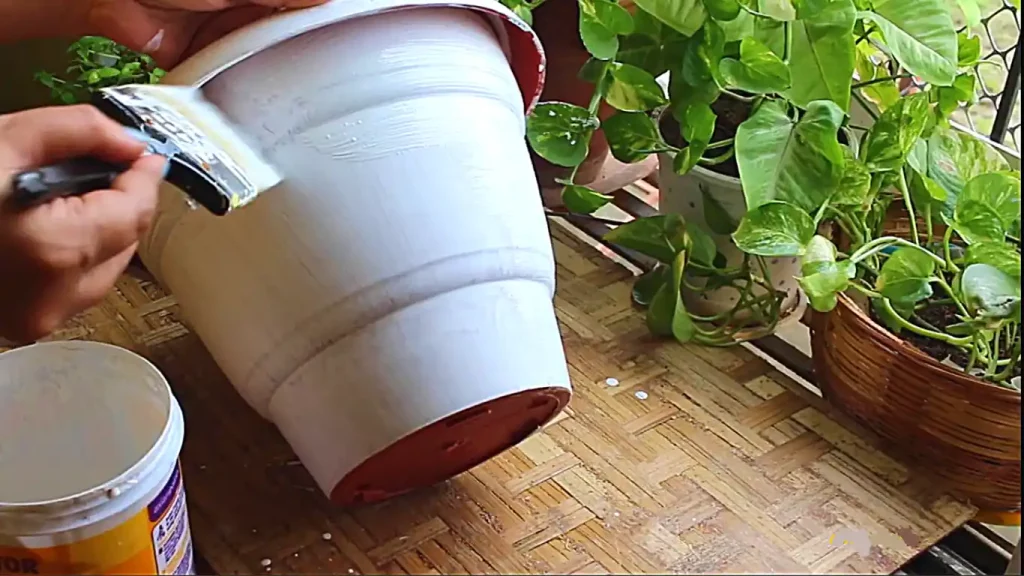If you’ve been looking for a way to give your plastic plant pots a new lease on life, you’ve come to the right place. Plant pots are a great way to display your plants, but they only sometimes fit with the look you are going for. If you are looking for a way to give them a makeover, why not try painting them? But can you paint plastic plant pots with emulsion?
The answer is a resounding “yes.”

Painting plastic plant pots with emulsion is a great way to add color and interest to a space. Emulsion paint is specifically designed for indoor use, so it will not fade or chip like regular paint. This paint makes it suitable for all kinds of plastic, including plastic plant pots, and provides a long-lasting finish. Generally, Emulsion paint is used for your interior walls and ceiling.
Painting plastic plant pots with emulsion can be a great way to give them a new look and add a bit of color and style to your garden. It’s an easy task that requires minimal supplies and effort, and it can be a great way to show off your creativity and add a personalized touch to your outdoor space.
How to Do It?
Painting plastic plant pots using emulsion paint is a simple task that can add a personalized touch to your outdoor space. Be sure to gather all the supplies you need, prep the pots, paint, and apply any finishing touches you want. By following mentioned steps below, you’ll have beautiful pots that will bring color and style to your garden.
Before you start, be sure to gather all of the supplies you’ll need:
- Plastic plant pots
- Emulsion paint
- Paintbrushes
- Drop cloth or newspaper
- Primer (optional)
Step 1: Preparing Your Pots
Before starting to paint, it’s important to clean your pots with warm soapy water. This will help to remove any dirt and debris that could affect the appearance of your final paint job. It’s also essential to make sure the pots are completely dry before you start painting.
Step 2: Primer
Applying a primer to your pots is a good idea before painting if you want to give your paint job extra durability. This will help to make sure the paint adheres to the plastic better, and it will help to protect the pots from the sun and other weather elements.
Be sure to allow the primer to dry before moving on to the next step.
Step 3: Paint
Now it’s time to start painting! Once the primer is dry, you can begin painting with the emulsion. Choose the right type of emulsion. Latex and acrylic emulsion are both suitable for use on plastic plant pots, but you should choose the one that best suits your needs.

Important Note: Water-based emulsion paint is best for painting plastic pots as it dries up quickly and is easy to clean up!
Begin by pouring a small amount of emulsion paint into a bowl. Dip your paintbrush into the paint and apply it to your pot in even strokes. Start with a thin layer of paint and add as many layers as needed to achieve the desired color.
Be sure to cover the entire pot and allow the first coat to dry before applying a second coat.

Step 4: Finishing Touches
After the second coat of paint has dried, it’s time to add any finishing touches you want. If you want to add a bit of extra color or texture, you can use a sponge or a rag to apply a glaze or a sealer to the pots. This will help to make them more durable and better able to withstand the elements.
Should I Use Emulsion Paint for My Plastic Plant Pots?
Honestly speaking, the decision is entirely yours. However, it’s important to consider both the advantages and disadvantages of emulsion on plastic plant pots before deciding. Let’s examine the pros and cons of emulsion on plastic plant pots.
Benefits:
1. Protection from the elements: One of the significant advantages of using emulsion on plastic plant pots is that it can help protect them from the elements. The emulsion is resistant to water, UV rays, and wind, which is ideal for protecting your plastic plant pots from harsh outdoor conditions.
2. Better look: Another advantage of using emulsion on plastic plant pots is that it can help enhance the look of your pots. Emulsion paint gives your pots a glossy finish, making them look more attractive and aesthetically pleasing.
3. Cost-effective: Lastly, using emulsion on plastic plant pots can be more cost-effective than purchasing new pots. It’s easy to apply, and once applied, it can last several years and protect your plastic pots from the elements.
Drawbacks:
1. Messy application: One major disadvantage of using emulsion on plastic plant pots is that applying it can be a bit messy. It’s important to be careful when applying the emulsion and ensure it is properly spread over the entire pot.
2. Damage to plants: Another potential downside of emulsion on plastic plant pots is that it can potentially cause damage to the plants. If the paint isn’t applied properly, it can cause the plants to become discolored or damage their leaves.
3. Limited lifespan: Additionally, using emulsion on plastic plant pots can limit the lifespan of the pots. Emulsion paint can eventually wear off and need to be reapplied, meaning that your pots may only last for a short time as they would without emulsion.
Wrapping Up
To conclude, painting plastic plant pots with emulsion is a great way to give them a facelift and make them fit right in with the style of your room. Just make sure you use suitable materials and take time to prepare and paint. With the right paint and a little bit of patience, you can transform your plant pots into a beautiful addition to any room or outdoors.

S. Pushon is a paint expert, self-taught artist, and currently working as an adviser in the paint industry as a Quality Improvement and Development Assistant.
An artist by heart, he draws remarkable art pieces and as a professional paint industry individual, he seeks the insight and shares with enthusiasts. Read more…

